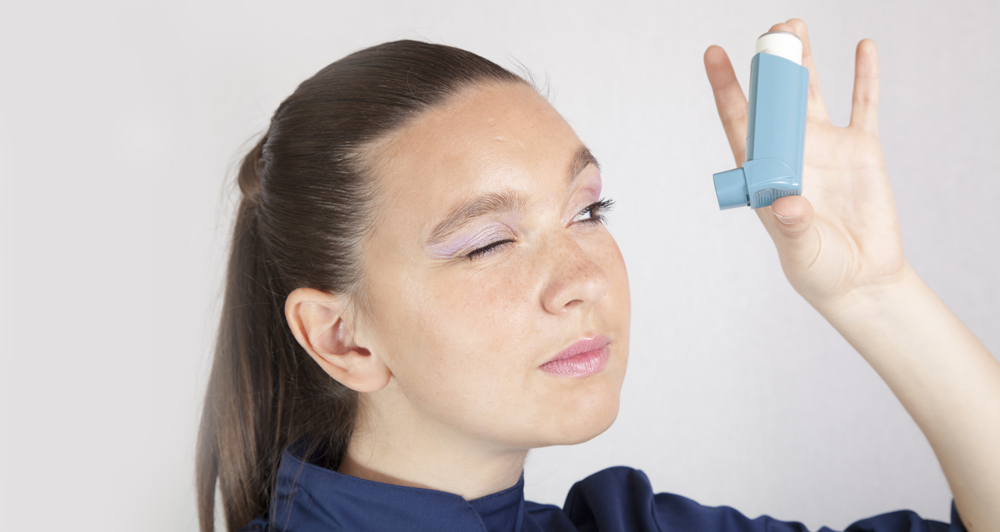Don’t waste your breath

Some guidelines are leading users away from best practice for the use of inhalers.
From the very start of their careers nurses are taught to search credible sources of information to find reliable researched practice guidelines upon which to base their care delivery.
These sources will include the latest editions of text books and e-books available from reputable publishers (which may be found through university and healthcare facility libraries), and individual facilities’ internal online procedure standards. These are trusted to contain the best available current research evidence.
Nurses will take this information and apply it to their practice. Thus there is an onerous responsibility for these sources to be accurate, as real patients with real healthcare needs will be the recipients of their instructions.
Assuming these credible sources are based on researched evidence it is not unreasonable to assume their practice guidelines will be as well. It is also not unreasonable to assume those guidelines are correct. Professional and student nurses should be able to access any of these resources, check a particular required procedure, and apply the practice straight to the patient. The patient should be able to assume the care they are receiving is the most appropriate for their needs and that they will have the best possible outcomes based on current information.
As university unit co-ordinators, we regularly inspect the latest editions of texts/ebooks to select suitable resources for our students. The following comparison describes how numerous resources give guidelines that peak bodies in Australia do not considered appropriate. If nurses are basing their practice on inappropriate information, then it becomes obvious patients are not receiving appropriate care and there is more potential for negative outcomes. It is thus incumbent upon senior nurses, nurse educators and text writers and reviewers to scrutinise available information and check that it truly is evidence based and best practice for the Australian context.
Comparing methods
A review of recent Australia/New Zealand edition nursing textbooks, e-books and online resources reveals conflicting information that can cause confusion and lead to misinformation when nursing students or nurses are educating patients on the correct technique for using pressurised metred dose inhalers (pMDIs) as part of their respiratory condition management.
Various texts on nursing fundamentals describe the most appropriate use of (pMDIs) – when there is no spacer – as holding the device about 2–5cm away from the mouth during administration.
This is contrary to our (and our colleagues’) experience and contrary to the advice from a number of sources, including Ventolin prescribing information, the Asthma Foundation, Asthma Australia and advice the National Asthma Council offers.
Information from the peak asthma bodies in Australia – the Asthma Foundation and the National Asthma Council – is clear on pMDI use. A summary of the correct steps (when there is no spacer) from these organisations and the Ventolin prescribing information includes:
- remove cap, hold upright and shake well
- breathe out away from the puffer
- slightly tilt chin to ensure open airway
- place puffer mouthpiece into mouth between the teeth and close lips to create a seal
- whilst breathing in, administer one puff and continue to inhale slowly and deeply
- remove device from mouth, close mouth and hold breath for a few seconds or as long as possible
- breathe out away from mouthpiece
- replace cap.
Videos and pictures showing this technique are also available through the relevant websites.
Despite the clarity of this information and advice, a summary of the typical contradictory text outlines the steps as:
- remove cap, hold upright and shake well
- breathe out away from the puffer
- position the device 2–5cm from the mouth (because this is considered the best way to deliver the medication)
- tilt head back slightly
- whilst breathing in depress the canister fully
- hold breath for about 10 seconds
- breathe out
- replace cap.
Note the difference in instruction for where to position the device. Thus far, a large number of commonly used current nursing texts from a range of publishers and distributors in Australia, including online guidelines available through hospital and university websites, have identified the open-mouth method as an appropriate technique. Some of these resources display pictures showing the puffer being held away from the user’s mouth.
Previous studies have shown varied results when comparing the open-mouth and closed-mouth techniques and experts remain divided. Some studies suggest the open-mouth technique reduces unwanted oropharyngeal deposition by allowing the aerosol plume more distance to slow down before reaching the back of the mouth. However, this technique can create issues with misdirection of the plume away from the mouth and into the eye or elsewhere. There is even information that suggests a possible link to glaucoma should Atrovent come into contact with the eyes. Also of concern is that a prescribed dosage may not in fact be inhaled and the patient may not be receiving the required therapeutic dose. Thus, the respiratory patient may not be achieving the best possible outcomes for their condition. Consultation with the expert asthma bodies in Australia confirms that the closed-mouth option is the most acceptable recommended method of delivery of a pMDI medication. With education to ensure appropriate technique, the patient will receive their full prescribed therapeutic dose and maximise the positive effects on their respiratory function.
The potential for misinformation and misdirection when teaching pMDI technique is revealed in a number of studies. Research from 2011 found the improper use of pMDIs was as high as 71 per cent in asthma patients. Researchers reviewed 20 relevant studies for a report published in 2007 and found that only up to 28 per cent of doctors, 22 per cent of nurses and 65 per cent of respiratory therapists could perform an “all-steps” inhalation technique correctly.
Again it cannot be overemphasised that correct technique is essential for best patient outcomes. Nurses play a major role in educating patients in medication administration and must be able to rely upon their resources to give suitable information to guide practice. They should also be able to find that such fundamental care instruction is consistent between resources.
As health professionals, it is important to be consistent in providing the correct accepted technique when educating our future nurses, as they will show patients in their care. Student nurses will use a number of educational resources so consistency of information and technique is paramount to avoid confusion.
Educators providing step-by-step instructions that indicate practice not linked to the evidence from the expert bodies can mislead nurses. This can have negative ramifications for patients.
In the interest of patient safety, it is recommended that nurse educators be vigilant in checking resources for accuracy and addressing concerns firstly with their students, in order to avoid confusion and poor practice, and subsequently with publishers to ensure future editions are accurate based on what is accepted and promoted in evidence-based practice by the expert bodies in Australia.
Therefore, it is recommended that when teaching pMDI use one checks the text, reviews the evidence for best practice and refers to the appropriate organisations recognised as experts in the field.
For more information, go to: bit.ly/1xVwWMX
Julie Dally is acting senior lecturer, acting laboratory co-ordinator and unit co-ordinator in the School of Nursing and Midwifery at the University of Notre Dame Australia Fremantle campus.
Benjamin Hay is a senior lecturer and unit co-ordinator in the School of Nursing and Midwifery at the University of Notre Dame Australia Fremantle campus.
Email: [email protected]





